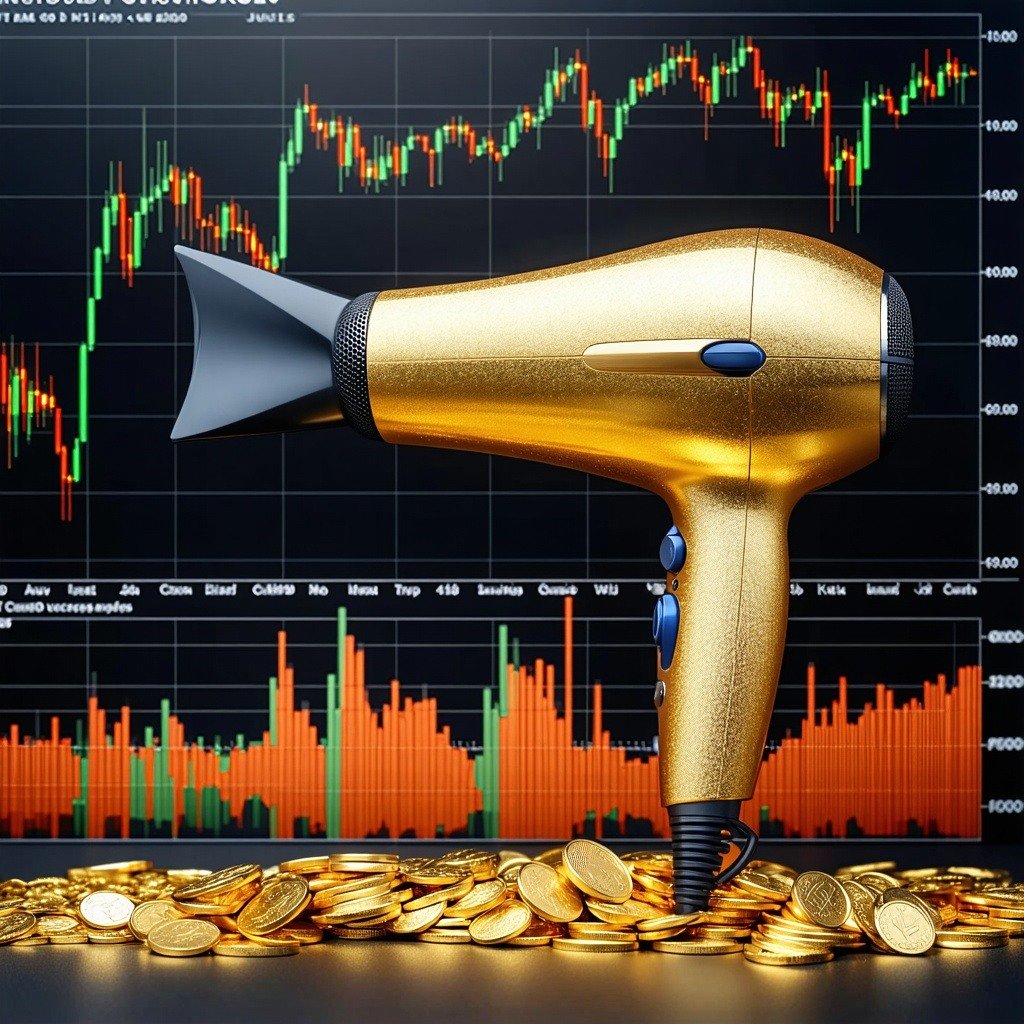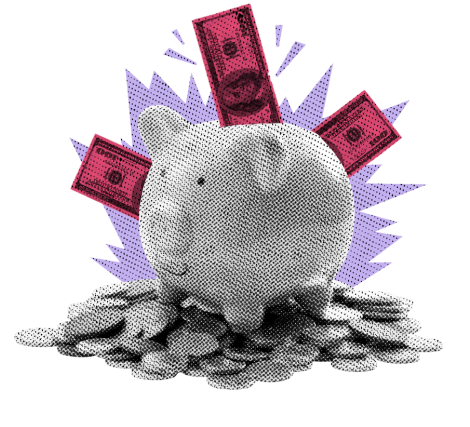
Forget TikTok pranks—tariffs are the real April Fools joke.
KEY TAKEAWAYS
- Companies outsource production due to lower labor and energy costs, not love for foreign cultures.
- Tariffs are used to incentivize domestic sourcing by making imports more expensive.
- Rational firms will raise prices to preserve margins when input costs rise.
- Inflation is a rate of change, not a measure of prices—once up, prices rarely come back down.
- Consumers ultimately bear the cost of tariffs through permanently higher prices.
MY HOT TAKES
- Tariffs might achieve long-term goals but come with immediate and long-lasting consumer pain.
- Economic narratives like “transitory” inflation are often misused and misleading.
- Firms behave rationally and predictably—policy should assume that.
- There’s a clear disconnect between policy intent and consumer reality.
- Real economic education is needed—most people don’t understand how cost transmission works.
- You can quote me: “INFLATION IS JUST A WORD. Go on and read it again. INFLATION IS JUST A WORD.”
Is this a joke? I’ll just get it out of the way. Welcome to April, first steps after an avoidable, painful quarter. Yes, It’s April 1st and TikTok pranksters will be releasing a slew of pre-recorded, scripted pranks, designed to make you think that this is how they live their daily lives. Tomorrow afternoon, the White House will be releasing its long-awaited, mostly scripted list of tariffs, counter-tariffs, and surely a collection of new biscuits for markets to wonder about going forward.
Before we get on the biscuits topic, let’s cover the well-worn one of tariffs and trade wars. What causes a company to source materials and production in other countries? Could it be that CEOs are all just Sinophiles, Mexicophiles, or Canadophiles? Well, there may be some CEOs that love Chinese, Mexican, and Canadian culture, but I can assure you that supply chain decisions have nothing to do with it.
A firm’s (a fancy economics term for a company) sole purpose for existence is to deliver great returns to its shareholders. Milton Friedman, the famous, outspoken Economist, fellow Rutgers alum (📣 RU!), and my sometimes-spirit animal, famously penned the words “the social responsibility of business is to increase its profits.” To be clear, I am taking it somewhat out of the context under which it was written, but it is a blunt way of stating a basic economic tenet that firms aim to maximize profits. That said, if firms are rational, they will make decisions based on costs and benefits. That would lead said rational firms to seek out the lowest production costs available while keeping quality constant.
Right now, the average hourly wage in the US is $35.93 per hour. That seems very low given the high price of… er, everything. If you think that is low, then what would you say if I told you that the average hourly wage in Mexico is $3.86 per hour? Not surprisingly, certain things are cheaper to produce in Mexico. Would you believe that in China, that number is a much higher $24.66? Still cheaper than the US, but when you factor in the cost of shipping, it may be a wash. So, Mexican labor is cheaper, and transportation is less complicated. That is probably why so many firms choose to manufacture in Mexico.
Lower costs can be attributed to other things besides labor. This one is going to blow your mind. 🤯 I am sure you have heard that the US imports 40 - 50% of its aluminum supply from Canada. Why would US manufacturers turn to Canada for aluminum? Believe it or not, aluminum smelting is very energy intensive, requiring 12,000 to 15,000 kilowatt-hours of electricity to produce one metric ton of aluminum. To put that into perspective, some 30 to 40% of the total cost of aluminum production is electricity. Are you shocked to learn that? ⚡Let’s keep going. In Quebec, electricity is cheap because of its network of hydroelectric dams. Specifically, electricity costs between $0.04 - $0.05 per kilowatt-hour compared to $0.07 - $0.12 per kWh in the US. That’s about ½ as cheap, which is why Canadian aluminum is cheaper than US Aluminum. It’s just math, silly.
So, as you might suspect, rational firms choose imports over domestic because of the economic benefits. Now, if you can figure out a way to dis-incentivize this activity, you can force firms to source domestically. If the US was a non-capitalist country, the government can simply force companies to buy local, but, alas, the US is still a capitalist-powered democracy. Why not tax domestic companies to not only achieve parity, but actually punish them for importing? Tariffs increase costs of imports, forcing rational companies to seek cheaper alternatives, like domestic companies. This can and will cause companies to seek local suppliers now that imports are no longer cheaper. Sign it and hold it up for the cameras! It’s a win, right?
But wait, now those domestic companies will be paying more for materials permanently. Let’s go back to the rational firm. Now that the firm is making less profit, how can it regain its margins? Folks, there is only one way. Raise prices to their customers.
Let’s get really simplistic about this. Let’s just say that a company makes a widget whose cost is made up of 50% imported materials. Those imported materials are now tariffed at 25% making the overall cost of the widget increase by 12.5%. If the widget firm is rational (and believe me, it is), it will raise its cost by 12.5%. That is, you and I will pay 12.5% more. Now, some Administration folks will tell you that it is short-term pain, others will tell you that it is not inflationary, only a one-time spike. Even the famous wordsmiths over at the Fed will tell you that the inflation effects of the tariffs are transitory.
Pay attention now. INFLATION IS JUST A WORD. Go on and read it again. INFLATION IS JUST A WORD. Are you worried about inflation or are you worried that you are now paying more for everything, forever. Now, there are some cases where we experience price deflation, but tell me, when is the last time you recall prices going down? Did your hair stylist raise her prices in the past few years and tell you that it was because her products went up sooo much in price due to inflation? Check out this chart, then follow me to the close.

You can see from this chart that Hair, Dental, Shaving and Miscellaneous Personal Care Products prices did spike by around 2 ½ percent in 2023 after a quick ascent in 2022. So, let’s just say that your stylist spends around 5 - 6% more for her products than a few years ago. Now, I am not going to ask you how much she raised her prices, but I am assuming she is rational-plus. 😉 Of course she must compensate for wage growth because she too buys eggs, chicken, and has to get her car serviced, which all costs more. So, now that beauty product inflation has returned to near-zero, did she lower her prices? Of course not, because inflation is a rate of change not an actual measure of absolute cost. That means that she still pays the same for hair mousse (does that even exist anymore) that she did last year. In other words, inflation is just a number. Similarly, transitory, and temporary are just words.
To sum it all up in case you didn’t know by now. I don't think anyone could argue with the goal to bring jobs and manufacturing back to the US. If tariffs are the chosen method to get there, assuming that they work, the cost is going to either be borne by companies or you and me. If you agree that firms are rational, then it will be you and me. Will there be long-term benefits? Indeed, there will be, as the trade deficit shrinks and becomes additive to GDP. Is the cost of this long-term benefit short-term, one-time, or temporary? Ask your hairstylist.
YESTERDAY’S MARKETS
Stocks had a wild ride yesterday, dropping the curtain on the worst performing quarter since 2022 (yeah, THAT year). A later session rally pulled stocks into green led by the Dow and defensive, value stocks, leaving the darling stocks of yesteryear on the heap. Treasury yields continue to decline as economic fears rise.

NEXT UP
- S&P Global Manufacturing PMI (March) is expected to be revised up to 49.9 from its flash estimate of 49.8.
- JOLTS Job Openings (February) may have declined to 7.655 million from 7.740 million vacancies.
- ISM Manufacturing PMI (March) is expected to have slipped to 49.5 from 50.3 into contraction territory.
- ISM Prices Paid (March) probably increased to 64.6 from 62.4, while Employment may have ticked lower to 47.2 from 47.6. Hmm, higher prices and weaker employment. That can’t be good. Watch all the ISM numbers carefully.
- Richmond Fed President Tom Barkin will speak today.
.png)

